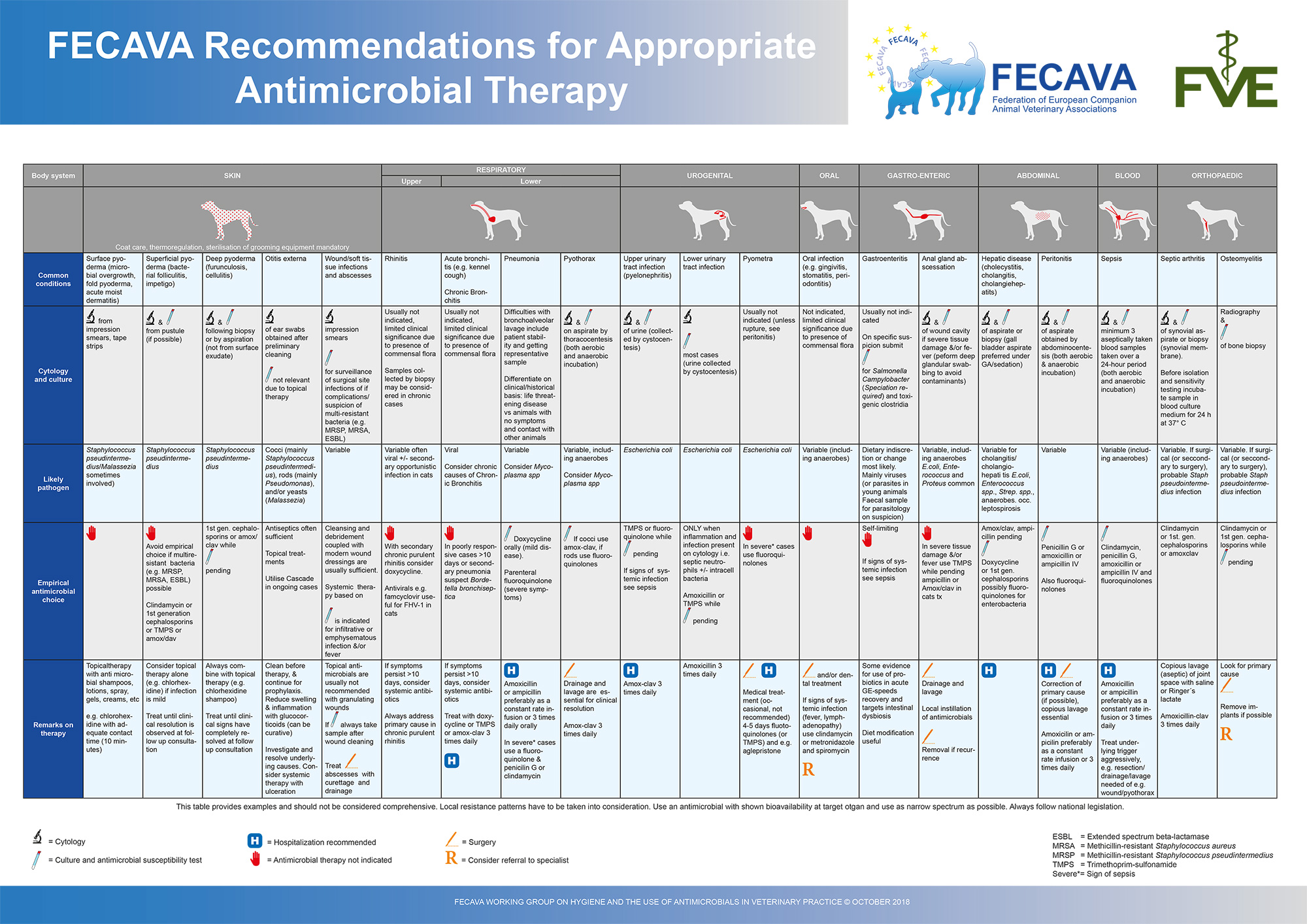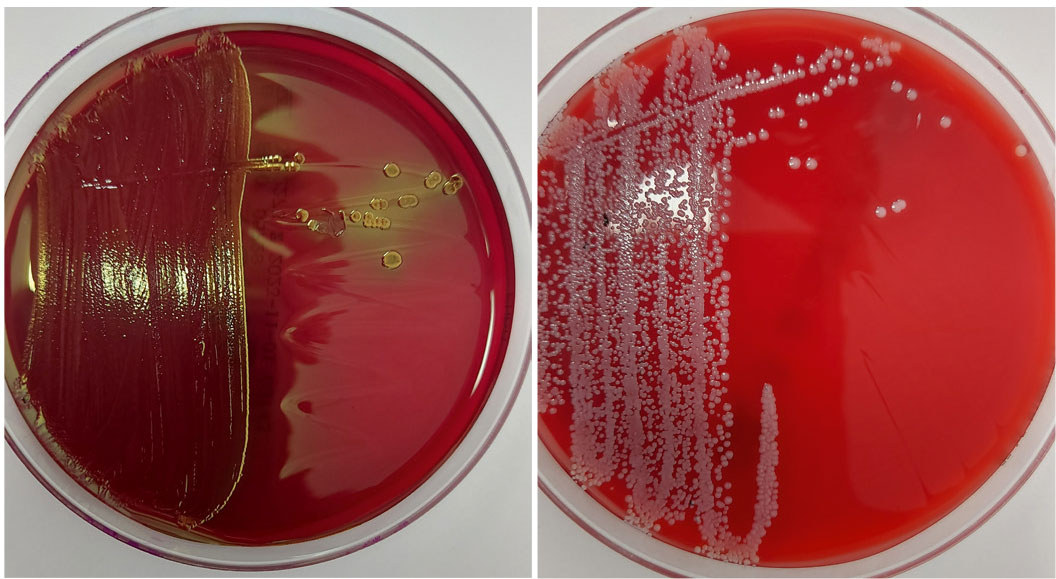Definition of terms
Clinical consensus statements and guidelines are recognised medical statements and guidelines issued by a committee of experts.
Consensus statements on pathophysiology, clinical guidelines for the diagnosis and therapy of common clinical presentations are important in both veterinary and human medicine. These are compiled on the basis of evidence-based medicine and commented on where necessary. A committee of experts in the respective fields, as well as members of various specialist organisations prepare a draft, which is then submitted to a journal and undergoes a peer review process.
After reviewing the content, consensus statements or clinical guidelines are then published. The authors are responsible for the content of these statements.
Professional organisations
Consensus statements and clinical guidelines are issued in many areas of veterinary medicine and by various international and national professional organisations. Table 1 lists some organisations in the field of small animal medicine that issue and/or collect consensus statements and publish them on their websites. The list is by no means exhaustive, but summarises important publishers in the field of infectious diseases in small animals. Most consensus statements are freely available online via «PubMed» or other search engines (open access) and do not require licenced library access.
-
Fig. 1: FECAVA poster with recommendations for antimicrobial therapy
Image source: FECAVA
-
Fig. 2: Common cystitis pathogen Escherichia coli on endo agar and Staphylococcus pseudintermedius on sheep’s blood agar
Image source: Laboklin
ACVIM (American Journal of Veterinary Internal Medicine) compiles numerous consensus statements. These mainly deal with internal diseases of small animal and equine medicine. However, their website also contains articles on infectious diseases in cattle. The consensus statements are published in the Journal of Veterinary Internal Medicine.
Table 1: Examples of professional organisations that draw up consensus statements
| Specialis societies | Focal points | Predominant species | |
| ACVIM | American College of Veterinary Internal Medicine | Internal medicine | Small animals, horses |
| WSAVA | World Small Animal Veterinary Association | Broadly diversified | Small animals |
| FECAVA | Federation of European Companion Animal Veterinary Associations | Broadly diversified | Small animals |
| BSAVA | British Small Animal Veterinary Association | Broadly diversified | Small animals |
| ISFM | International Society for Feline Medicine | Cat medicine | Cats |
| ISCAID | International Society for Companion Animal Infectious Diseases | Infectious diseases | Small animals |
| ESCCAP | European Scientific Counsel Companion Animal Parasites | Parasites, dermatophytes | Small animals, horses |
| BTK | Bundestierärztekammer | Broadly diversified, antibiotic guidelines | Small animals, horses, farm animals, etc. |
FECAVA (Federation of European Companion Animal Veterinary Associations) is the overarching European organisation in the field of small animal veterinary medicine maintains a list of consensus statements on its website and provides overview posters for veterinarians (Figure 1) on the use of antimicrobial agents in common infectious diseases and information material for animal owners on the subject of infectious diseases, antibiotic therapy and hygiene. The posters and information material can be ordered in German from LABOKLIN.
The BSAVA (British Small Animal Veterinary Association), in collaboration with SAMSoc (Small Animal Medicine Society), published a book on the responsible use of antibiotics in combination with two posters on diagnostics and empirical therapy for common infectious diseases. «PROTECT ME», the BSAVA/SAMSoc Guide to Responsible Use of Antibacterials, is a comprehensive reference work on the subject of antibiotics in general as well as specifically focussing on diseases that are frequently encountered in veterinary practice. For example, it includes chapters on bacterial eye infections, gastrointestinal infections and urinary tract infections.
At national level in Germany, the BTK (German Veterinary Association) issues guidelines on a wide range of veterinary activities. In the field of infection medicine, everyone should be familiar with the antibiotic guidelines.
The Antimicrobial Working Group of the ISCAID (International Society for Companion Animal Infectious Diseases) develops consensus statements and guidelines specifically for infectious diseases and their management and treatment in small animals. The ISCAID consensus statements for common infectious diseases in dogs and cats are briefly presented below. As with all guidelines, they represent recommendations that have been developed from the point of view of good veterinary practice and cover many cases from practice, but can never represent all clinical disease patterns equally.
ISCAID guidelines on the management and treatment of infectious diseases
1. Handling antimicrobial agents ‒ antibiotic stewardship
Given the background of antibiotic resistance and multi-resistant germs, the conscious and sparing use of antibiotics is more important than ever in order to maintain their effectiveness in the future. Guidelines on the use of antibiotics in small animal practice (antibiotic stewardship) have therefore been defined to help practitioners provide patients with successful treatment on the one hand and avoid the development of resistance on the other. These guidelines include willingness to participate, prophylactic measures such as vaccinations, the conscious selection and use of antibiotics, the development of treatment plans and the development and sharing of knowledge. The creation of a practice’s own resistance monitoring programme can also be part of antibiotic stewardship.
2. Infections of the urogenital tract
The current guidelines on urinary tract infections were published in 2019. In contrast to the previous guidelines from 2011, infections of the urogenital tract are categorised into sporadic bacterial cystitis, recurrent bacterial cystitis, pyelonephritis and bacterial prostatitis. The topics of subclinical bacteriuria, urinary catheters, surgical interventions on the urogenital tract and drug dissolution of urinary stones are also covered. The most common cystitis pathogens are Escherichia coli (Figure 2), other enterobacteria such as Proteus mirabilis and coagulase-positive staphylococci such as Staphylococcus aureus and Staphylococcus pseudintermedius (Figure 2).
The guidelines classify each clinical picture, then provide recommendations for diagnosis and treatment, followed by information on patient follow-up.
Sporadic bacterial cystitis occurs frequently in dogs and less frequently in cats. In veterinary practice, they are often an indication for the use of antibiotics.
In the new guidelines, a shorter course of antibiotics is recommended for most of the clinical pictures described. In the case of sporadically occurring cystitis, initial treatment with antibiotics should be avoided; treatment with anti-inflammatory drugs is recommended in the first instance. Subsequently, antimicrobial therapy is started for 3 to 5 days after the results of the cultural examination and if the clinical symptoms persist. Amoxicillin and trimethoprim/sulphonamide are the first choice. In the case of pyelonephritis and bacterial prostatitis, it is important to inform the laboratory of the sampling location, as different evaluation criteria are involved.
3. Respiratory tract infections
In veterinary practice, dogs and cats frequently present with respiratory infections. The ISCAID guidelines describe various diseases such as acute and chronic upper respiratory tract infections, bacterial bronchitis, pneumonia and pyothorax. For each disease complex, the causative pathogens and suitable samples for diagnosis are described and treatment recommendations are given. Doxycycline is mentioned as the first choice for many bacterial diseases of the respiratory tract in dogs and cats.
4. Dermatology
The guidelines for superficial folliculitis and pyoderma in dogs date from 2014 and are currently being revised. Guidelines on dermatophytes and malassezia are also available. The main pathogen in canine superficial folliculitis and pyoderma is Staphylococcus pseudintermedius. Local therapy with antiseptic preparations is primarily recommended. Clindamycin, 1st generation cephalosporins such as cefalexin, amoxicillin-clavulanic acid and trimethoprim/sulphonamide are recommended as the empirical antibiotics of choice for systemic therapy.
Prohibitions on the use of certain antimicrobial agents in animals
In February 2023, new legislation (Implementing Regulation EU 2022/1255) came into force at European level, which bans the use of certain antimicrobial agents (antibiotics and antivirals) and antiparasitics in animals, as these agents are to be reserved exclusively for human medicine. Among other things, active substances such as ticarcillin, piperacillin, meropenem and imipenem may no longer be used in animals.
Summary
Clinical consensus statements and guidelines are valuable resources for veterinarians as they provide consolidated and standardised information along with expert opinion on the diagnosis and treatment of common diseases in veterinary medicine. Consensus statements are usually available online free of charge. There are overview posters available for the most common infectious diseases in small animals, which cover the diagnostic procedure and empirical treatment.
Dr. Marianne Schneider
Our services relating to bacterial infectious diseases
– Aerobic and/or anaerobic bacteriology
– Antibiogram for aerobic and/or anaerobic germs
– Testing for multi-resistant germs
– Blood cultures
– Numerous direct pathogen detections by means of PCR
– Aromatograms, autovaccines
– and many more…





